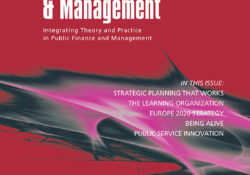eric.ed.gov har udgivet: “Children’s Choices,” a project of a joint committee supported by the International Reading Association (IRA) and the Children’s Book Council, is published annually in “The Reading Teacher.” Books recommended by children are grouped by levels: Beginning Reader (ages 5-7); Young Readers (ages 8-10); and Advanced Readers (ages 11-13). Books listed at the Beginning Reader level and Young Reader level of “Children’s Choices” from 1996 through 2006 were analyzed for support of specific curriculum areas. Books related to language arts, math, social studies, and science were categorized and listed according to Louisiana content standards for prekindergarten, kindergarten, first, second, and third grade. The resulting categorized, annotated book list reflects content areas and standards, and each annotation reflects age range as indicated in “Children’s Choices.” Early childhood teachers will… Continue Reading →
Like this:
Like Loading...
tandfonline.com har udgivet en rapport under søgningen “Teacher Education Mathematics”: Link til kilde
Like this:
Like Loading...
eric.ed.gov har udgivet: Despite suggestions for incorporating students’ experiences into school math lessons, mathematics education seems to be the last bastion of formalism. This paper reports on a sociocultural study of the use of students’ personal experiences in early childhood elementary mathematics lessons. This study documents the use of students’ personal out-of-school experiences in classroom math and other subjects and investigates barriers that may prevent such linking. The following questions are addressed: (1) To what extent do teachers currently link school math and students’ personal out-of-school experiences? and (2) What influences the use of such linking? The study included observations of lessons in mathematics, language arts, and social studies in public, private, and homeschool settings. Despite recommendations in the literature, results showed that teachers rarely link students’ personal experiences to… Continue Reading →
Like this:
Like Loading...
eric.ed.gov har udgivet: In this exploratory inquiry into the nature of the relationship between systematic instructional design models and teachers’ planning practices and needs, the researchers conducted open-ended interviews with six teachers of science and math in order to discover how they conceptualized and practiced instructional design. The most important finding to emerge from this research was that, from the teachers’ perspective, caring must be a central component of any instructional design activity. Regardless of gender and grades taught, the teachers indicated that they need to be able to make instructional decisions based upon their caring relationships with individual learners. Link til kilde
Like this:
Like Loading...
sciencedirect.com har udgivet: Highlights • Teachers’ written solutions to fraction multistep word problems were analyzed. • Teachers’ strategy and representations use moderately explained their solution correctness. • Teachers’ background characteristics accounted for little variance in solution correctness. • The use of informal strategies and representations were key to correct solutions. Abstract Examining teachers’ knowledge of fraction word problems is important in light of research demonstrating difficulties in both teaching and learning fractions and word problems involving fractions. This study examined fourth- and fifth-grade teachers’ (N = 350) written solutions to three fraction multistep word problems to unearth the salient factors contributive to performance on word problems. We found teachers’ strategies explain teachers’ success in solving word problems. In contrast, the characteristics of teachers’ backgrounds account for little variance in success in solving… Continue Reading →
Like this:
Like Loading...
